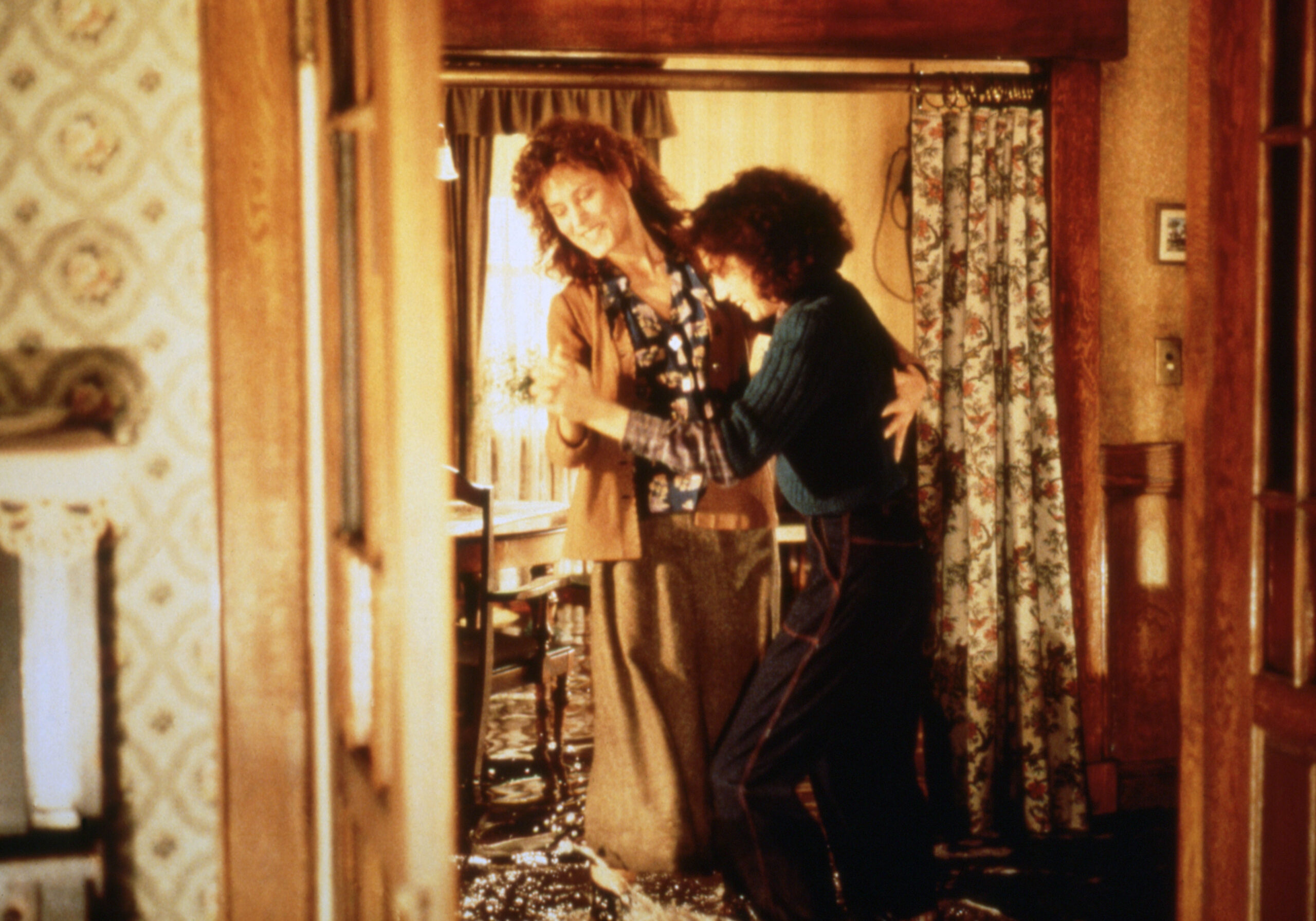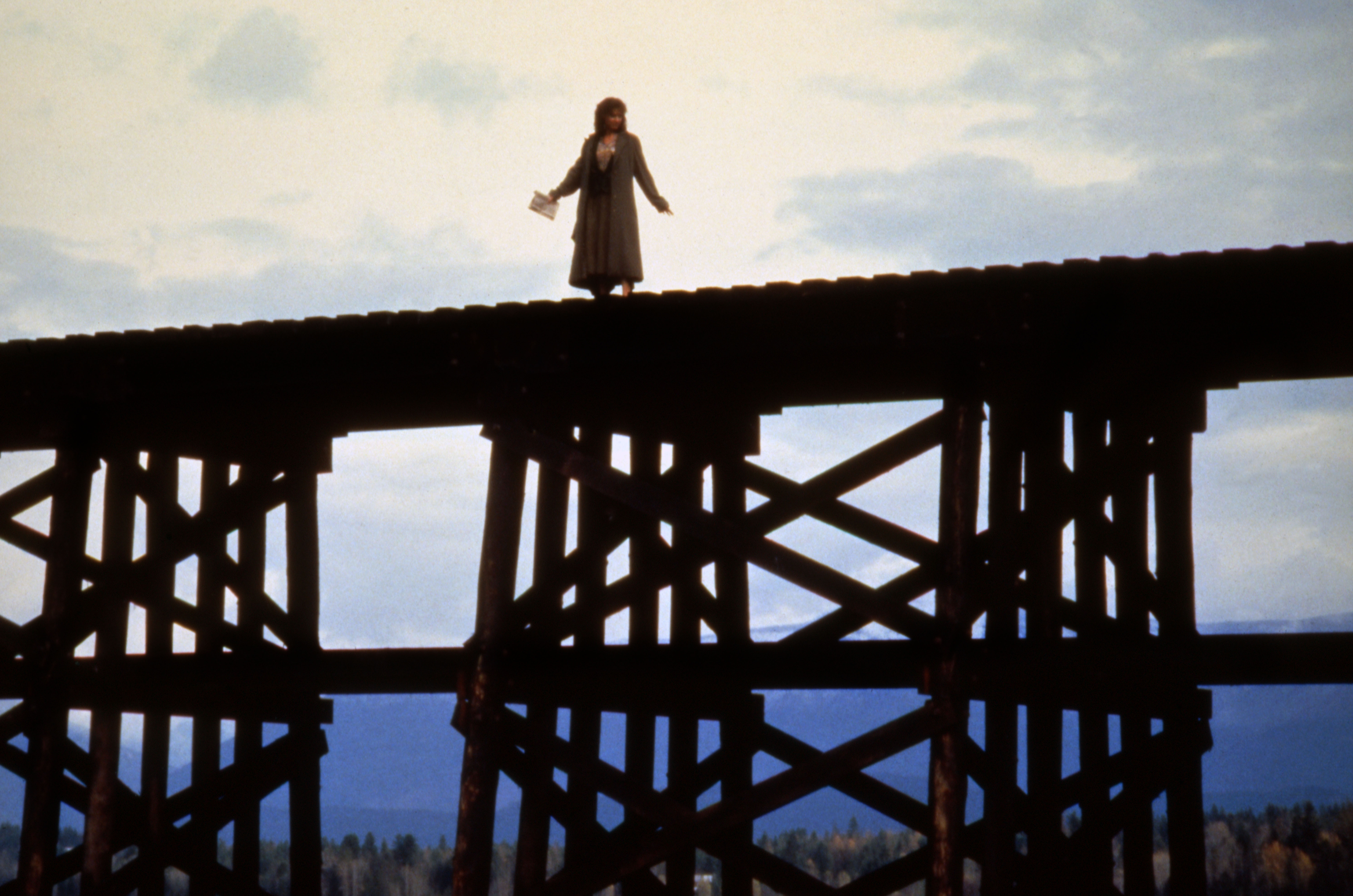A male director from Scotland worked with a nearly all-female cast to adapt a celebrated American novel in small-town B.C. Almost 40 years after it vanished from theatres, Housekeeping is still finding its audience. The story behind the film involves last-minute casting shakeups, two Kootenay politicians going up against a railroad company—and a pair of scissors.
In 1980, Anatole Broyard of The New York Times reviewed the debut novel by Marilynne Robinson, a recent PhD graduate from the University of Washington. Housekeeping, Broyard wrote, “sounds as if the author has been treasuring it up all her life.… You can feel in the book a gathering voluptuous release of confidence, a delighted surprise at the unexpected capacities of language, a close, careful fondness for people that we thought only saints felt.” Housekeeping would go on to win the PEN/Hemingway award for best first novel and quickly become regarded as a classic of American literature. It would also inspire legions of devoted readers..
Four years after the novel’s publication, Scottish filmmaker Bill Forsyth was in New York to accept a screenplay award for Local Hero, his comedy about an American oil executive trying to buy a small Scottish town (the locals feign reluctance to sell in order to drive up the price). An actress friend recommended Housekeeping to Forsyth, who fell in love with it. “The novel seemed to be touching on all the senses,” he told The Times. “You’re exposed to emotional information, poetical insights, thoughts—things are coming at you on different levels. When I read it, I felt this is how movies should be.” He set out to adapt Housekeeping as his next film.
“Many who read the book called it unfilmable,” Marke Andrews wrote in the Vancouver Sun. For good reason: Robinson’s lyrical prose and elliptical storytelling infuse every page of Housekeeping. “I studied English literature in graduate school, so Herman Melville, Emily Dickinson, and Ralph Waldo Emerson were on my mind,” Robinson told Dan Stone of the National Endowment for the Arts. “I’m very interested in the musicality of language.”

Courtesy of Alamy Stock.
The very elements that drew Forsyth to the book would be the first things he’d have to remove.
“The main struggle was to take just the story out of the poetry,” he told The Times. To accomplish this, the director took two copies of the novel and cut them apart with scissors to locate the novel’s storyline. “I ended up with two filleted books,” he joked.
Housekeeping takes place in the small town of Fingerbone, Idaho, and is narrated by Ruth, one of two young girls raised by their grandmother after their mother’s suicide. When their grandmother dies, teenagers Ruth and Lucille are left in the care of their Aunt Sylvie, an eccentric drifter who often sleeps outside, collects bundles of newspapers, and refuses to punish the girls when they skip school. “Sometimes it felt that we were looking after Sylvie instead of the other way around,” Ruth narrates. While Ruth is gawky and introverted and more comfortable with her aunt, Lucille desires to be respectable and form friendships with other girls. The two sisters drift apart. When Sylvie and Ruth stay out in the woods one night—and worse, hop a train home—the townspeople begin to worry about Sylvie’s influence.
While the novel is told by an older Ruth circling back through her memories of childhood, Forsyth’s script tells the story directly, with no flashbacks, and with Ruth’s narration over the action. “I took a risk: to capture the poetic tone of the novel I tried not to capture it.”
Initially Diane Keaton agreed to play Sylvie, and Housekeeping was greenlit by Cannon Films. Yet six weeks before shooting began, both Keaton and the production company left the project. Fortunately, David Puttnam at Columbia Pictures, who had produced Forsyth’s Local Hero, agreed to finance the film. Oscar-nominated Christine Lahti (Swing Shift) was signed to play Sylvie. According to Forsyth, Lahti “embraced the character of Sylvie completely—including the negative qualities—something that not every actress would do.” The roles of Ruth and Lucille would be played by two Vancouver teens, both new to film, Sara Walker and Andrea Burchill.
Filming began around Nelson and Castlegar, B.C., in September 1986 and lasted until mid-December. Lahti and Forsyth found their collaborative stride, while Walker and Burchill adapted to life on set: parents and tutors were welcome, but the young actors weren’t allowed to watch rushes for fear they’d become self-conscious. Yet even with funding secured and a new lead actress, the production ran into another difficulty, this time from CP Rail.
Fingerbone is a railroad town, and Housekeeping heavily features trains. Ruth and Lucille’s grandfather died in a spectacular train crash off a bridge, while their Aunt Sylvie’s preferred method of travel is to ride the rails hobo-style. Sylvie and Ruth make their escape by walking across the same railroad bridge where the town’s infamous accident occurred. According to the Vancouver Sun, “CP Rail executives were upset at some of the images in the script, particularly those of children walking along tracks and of people hopping freight trains.” Three weeks into filming, the company refused to let Forsyth’s crew shoot on its tracks or use railway equipment at all.
The solution to the deadlock came from an unlikely source: two local politicians, Nelson’s mayor, Gerald Rotering, and Kootenay West MP Bob Brisco. Aware of how the mill’s closure had damaged the local economy, and how much money Steve Martin’s Roxanne had pumped into the region, Rotering and Brisco convinced CP Rail to cooperate with the Housekeeping crew.
Housekeeping premiered in the fall of 1987. Critical reaction was positive. Siskel and Ebert gave the film two thumbs up, and Ebert included it on his best of the year list. Vincent Canby called the film “a clear-eyed, brow-furrowed, haunting comedy,” praising Lahti, Walker, and Burchill’s performances. In his review for the Los Angeles Times, Michael Wilmington called Lahti’s performance “wonderful” and enthused about the film’s “stark, elemental American purity”—ironic given its B.C. locations.
Despite such praise, Housekeeping was given little marketing push once Puttnam was fired from Columbia. “I don’t think it was released,” Forsyth would joke about Housekeeping’s lack of support years later. “It escaped for a bit.”
As with many of Forsyth’s films, Housekeeping would grow in esteem over the years, becoming a cult classic, albeit a hard one to find. Today it’s available on most rental services. Robinson’s book was included on Time’s list of the 100 best English-language novels published since 1923. Her subsequent novels continue to inspire film interest: Martin Scorsese and Leonardo DiCaprio are adapting her novel Home for Apple.
The pairing of a Scottish director known for comedies with a dark and meditative American novel set in the Pacific Northwest seems at first an odd match. And filming it in B.C. adds another layer of incongruity, but the film, however obscure today, was a creative and critical success. When asked in 2008 which film she was most proud of, Christine Lahti cited Housekeeping. “I just love it so much.”









